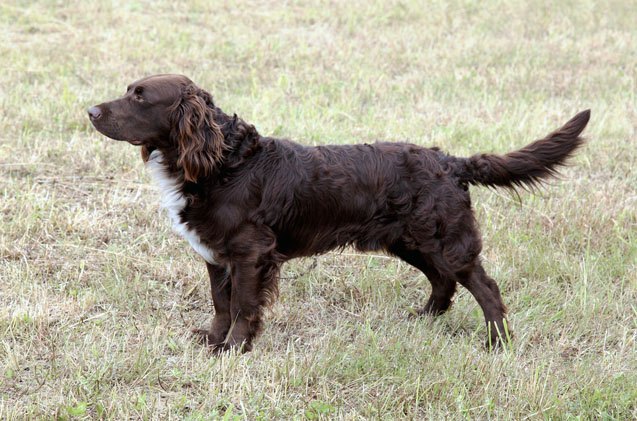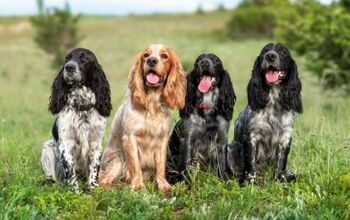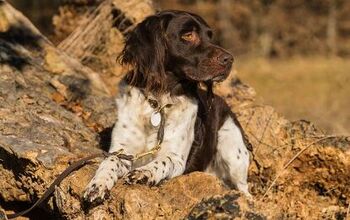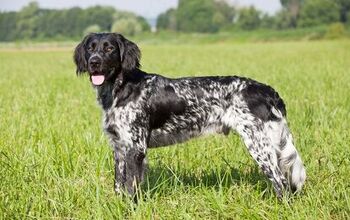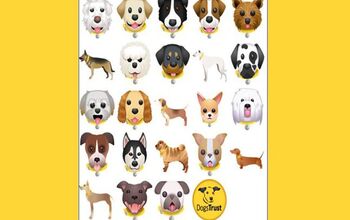German Spaniel


About German Spaniel
Also known as the Deutscher Wachtelhund, the German Spaniel is a hunting breed known for its thick, wavy coat and its friendly temperament. Though it was developed as a hunting dog, this breed is highly adaptable to different living situations as long as his needs for exercise are met. Even so, his primary purpose is to work as a gun dog hunting upland game.
The German Spaniel is a hunting breed known for its thick, wavy coat and its friendly temperament.
Developed in the 1890s, the German Spaniel is a German hunting breed created by breeder Frederick Roberth. Though a number of breeds were used in development, the most notable is the now-extinct Stoeberer. With early mentions dating back to 1719, the Stoeberer had the nose of a Bloodhound but Roberth wanted to create a breed that was much more versatile. Using the Stoeberer and various water dogs and sporting spaniels, he eventually created what is now known as the German Spaniel.
The German Spaniel was first recognized as a breed in 1903 and the German breed club, the Verein fur Deutsche Wachtelhund, was established. Breed development continued but the German Spaniel wasn’t introduced in the United States until the 1960s and 70s. The German Spaniel has yet to be recognized by the AKC but it has been admitted into the Foundation Stock Service and was recognized by the United Kennel Club in 1996. Current estimates place about 100 German Spaniels in North America, so it is still a fairly rare breed outside of Germany.
The German Spaniel is descended from the now-extinct Stoeberer which was crossed with various water dogs and spaniels during breed development.
As a medium-sized dog, the German Spaniel should be fed a high-quality dry food that is formulated for adult dogs, though some dogs may cross the 50-pound border to become a large-breed dog. Because this breed was developed specifically for hunting, he may also do well on an active or working breed formula.
The German Spaniel is an intelligent and trainable breed developed for its strong hunting instincts and versatility.
The German Spaniel is an intelligent and trainable breed developed for its strong hunting instincts and versatility. These dogs are generally friendly toward other dogs and people, plus they are highly adaptable to new situations and courageous in the field. This breed fulfills a variety of roles as a gun dog, capable of hunting, tracking, and retrieving. The German Spaniel loves his work and can be an aggressive hunter, so training may be necessary to control his instincts if you plan to keep him as a family pet. These dogs need a firm and consistent hand in leadership when it comes to training, though they may not respond well to harsh training methods. Positive reinforcement training is recommended.
The German Spaniel walks the line between being a medium-sized and a large-breed dog, standing between 18 and 21 inches tall and weighing between 40 and 55 pounds at maturity.
The German Spaniel is a friendly and sociable breed that gets along with most dogs and people. These dogs can become focused on their job in the field but they also enjoy spending time with family. This breed is intelligent and easy to train, but he still requires a strong leader in the household and plenty of exercise to prevent the development of problem behaviors. These dogs adapt well to new situations as well.
The German Spaniel is a healthy breed in general, though all dogs are prone to certain health problems. Aside from field injuries, this breed may be affected by conditions such as hip dysplasia, ear infections, skin conditions, and allergies.
The average lifespan for the German Spaniel is thought to be about 12 to 14 years which is about average for a breed of its size. To maximize your German Spaniel’s lifespan, you should be sure to feed him a healthy, high-quality diet formulated for large-breed dogs or try a formula for active breeds.
The German Spaniel has high needs for exercise, largely because he is a hunting breed. These dogs need about an hour of daily exercise, though they will appreciate any extra training and would love to have a fenced yard in which to run. They may also do well in training for various dog sports.
The German Spaniel is a friendly and sociable breed that gets along with most dogs and people.
The German Spaniel is not currently recognized by the AKC but he is part of the Foundation Stock Service (FSS) and is recognized by the FCI and the United Kennel Club. The FCI classifies him in Group 8 as a Flushing Dog and the United Kennel Club recognizes him as a Gundog.
The German Spaniel has a long coat of thick, wavy hair. The texture of the coat is fine on the head but it is longer on the body. The body has a thick undercoat for protection from the elements and there is usually plenty of feathering as well. The most common color for the breed is a dark brown or a brown roan color. Many dogs have white markings on the chest or legs and some exhibit lighter shades of red.
The average litter size for the German Spaniel is up to 8 puppies. Because these dogs walk the line between being a medium- and large-sized breed, it is a good idea to feed puppies a puppy recipe formulated for larger breeds so they don’t grow too quickly. Start your German Spaniel puppy with socialization and training from an early age as well.
Photo credit: Capture Light/Bigstock.com

Kate Barrington is the loving owner of two cats (Bagel and Munchkin) and a noisy herd of guinea pigs. Having grown up with golden retrievers, Kate has a great deal of experience with dogs but labels herself a lover of all pets. Having received a Bachelor's degree in English, Kate has combined her love for pets and her passion for writing to create her own freelance writing business, specializing in the pet niche.
More by Kate Barrington



